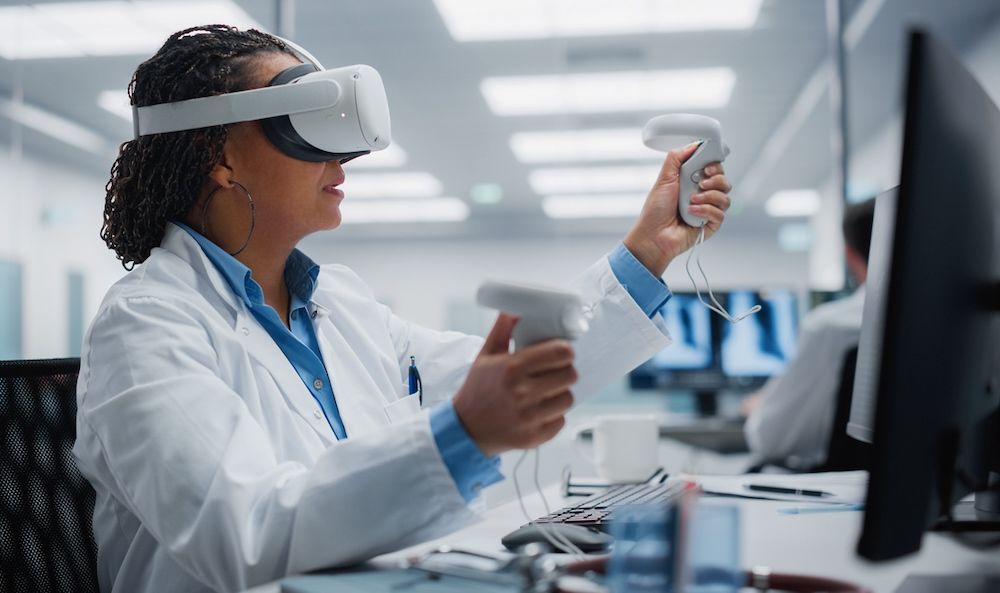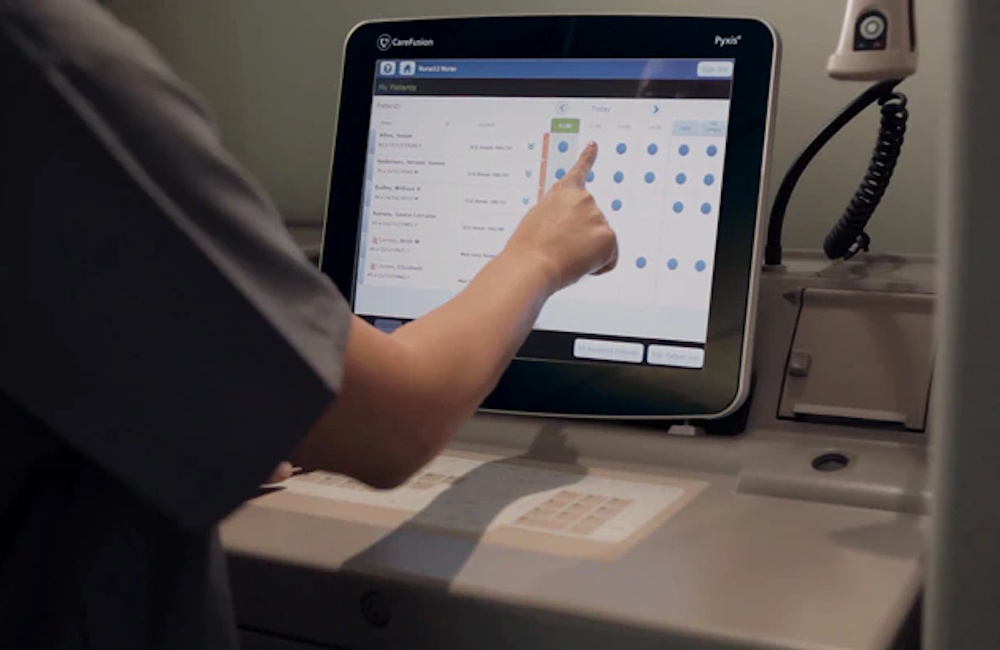Pharmacy Simulator, a recently launched detailed serious game covering simulation of pharmacy practice, aims to support pharmacy education and training around the World. The training solution was developed by Dr. Bindoff and his team at the University of Tasmania over the past several years as an engaging and low-cost way to deliver pharmacy practice scenarios to learners. After early experimental results demonstrated the potential of their techniques, Dr. Bindoff sought to close the loop by out-licensing the technology to his startup company and developing a commercially viable version of the software which can be easily maintained, expanded, and updated, and can be distributed globally. Imitated Environments plan to expand Pharmacy Simulator internationally, and to cover more of the pharmacy practice space. Today we take a closer look at Pharmacy Simulator, a SaaS which is available now on Windows, Mac, iOS, and Android, with a limited time exclusive HealthySimulation.com discount shared below!
Pharmacy Simulator is a detailed and expressive simulation tool. The player fills the role of the pharmacist, or pharmacy technician, and must walk through all the steps of a pharmacy patient encounter, in a fully realized 3D pharmacy environment. The patients can model moods, such as anger, happiness, sadness, and are fully animated and expressive. Their responses to your actions, can be modeled to vary based on the inputs you’ve fed into the system thus far – for example, if you’ve upset the patient, their responses to questions might be less forthcoming and they may hide details that they would have otherwise revealed. At the end of the scenario, a comprehensive debrief provides feedback that the students can learn from before trying again.
Learners of pharmacy, from first year right through to practicing professionals, will enjoy refining their skills, learning about best-practice, and trying to achieve optimal, respectful, and effective patient counseling strategies:
- Patient Reactions: Patients react to learner’s input and help teach the value and impact of strong communication skills.
- Dispense in Real Time: Use the dispensing computer to review patient notes and dispense and label medicines. As well as providing practice for latin abbreviations, your labels can be assessed for appropriateness.
- Immediate Feedback & Assessment: Learners receive detailed feedback automatically each time they complete a scenario, including advice on how to improve, and a rationale justifying the advice. Instructors can review learner progress, and gain insights into areas where learners may be struggling.
- Scenario Creation: Educators can create and share their own scenarios using the in-built scenario editing tools. Easily adapt scenarios for your local conditions, or refine them to reflect changes to best practice. Grow the bank of scenarios, and help educate the next generation of pharmacists.
- Realistic Environments: Explore a detailed and accurate 3D pharmacy environment, complete with front of shop, dispensary, fridges, safe, a counselling room, and even a staff break room.
- Built By Educators: Developed and tested within the University environment as well as scientifically evaluated and proven to be effective at teaching pharmacy practice.
Addressing the Issue of Content Development in Pharmacy Simulation with Easy to Use Scenario Builder
In recent years there has been a surge in the development of game-like simulations that help learners practice professional skills. This trend has emerged as the cost and availability of game development tools has improved, and the profile of the average learner has shifted towards being more tech engaged. And it’s easy to see the appeal for educational institutions – interactive, dynamic learning experiences that can approximate real world scenarios, are highly available to leaners,, and yet don’t require the same commitment of expensive teaching resources such as sessional staff and actors. What’s not to love? However, a critical flaw has consistently undermined the ability for these types of learning experiences to become highly available to learners globally.
Dr. Ivan Bindoff, the Director of Imitated Environments, creator of Pharmacy Simulator, shared “The problem we saw time and time again in the uptake of computer-based simulated learning experiences is that it’s generally impossible for educators to customize or tailor the learning content to suit their learners.” The problem as he sees it lies in the history of many of these solutions. “The projects are typically driven by a particular group of educators and researchers at a given institution, to solve a particular set of teaching needs that they’re experiencing”.
Dr. Bindoff continued that “It’s very hard to make one set of content that is suitable for all users in this big, wide complicated world. Traditionally, when changes to the scenarios are required, a software developer of some description has had to get involved to “program in” the updates, to make the changes. Needing to loop in a software developer causes an incredible amount of inertia. Money, time, back and forth iteration between the educators and the developer. It just becomes too big of a problem.”
The consequence of this, Bindoff suggests, is usually that products often aren’t adequately maintained, and fall out of use after only a few years. A real shame when we consider how much care and design has gone into their creation, and how much potential educational value they represent.
“In the end, deciding on the solution was actually the easy part. We needed to make sure that the educators themselves are the ones who can write, edit, update the content – directly. With no developers involved in the process, educators don’t have to look that far to find examples where games have done exactly this.” This is what can happen when you empower your users to become creators. And this is why Pharmacy Simulator was designed from the beginning to include a scenario editor.
“Our main focus has been on building this scenario editor, and ensuring our engine is sufficiently expressive, so that educators can create the scenarios they want their learners to experience. I’ve worked in the pharmacy practice research space for 10 years, so I had a fair idea of the kinds of things we needed to encapsulate with our design, but at the end of the day I’m not a pharmacist, so we’ve spent years working with pharmacy educators to build the right engine. Very proud to say that the core is finished and working well now, although there’s always room for improvement”.
Localizing Pharmacy Education at a Global Scale
“For example, educators in Malaysia don’t want to teach quite the same things as educators in Canada. There are subtle differences in what pharmacy practice entails, there are differences in the medicines available, there are cultural and societal differences. But at the core, the practice is fundamentally similar. So we wanted to make sure that when someone creates a scenario for their learners, it can be modified with minimal effort to meet the needs of learners in another region.”
To do this, they have included localization tools in the software. Each region can maintain their own product database: the list of medications available in their region, which is shared on the cloud. They can also copy an existing scenario, and then automatically translate it into the language of their choosing using Google Translate services. All the spoken voice lines can also be re-generated using Google’s Text to Speech service. The educator simply tidies up the clumsy language that comes out of Google Translate, updates any references to medications from the wrong region, and considers cultural or regional variations to practice. It may have taken the original author half a day or more to originally write the scenario, but the regional adaptation might take only half an hour.
Exclusive HealthySimulation.com Discount – Good Through July of 2019
Secure a 30% discount on your order using the code EARLYADOPTER during checkout!







